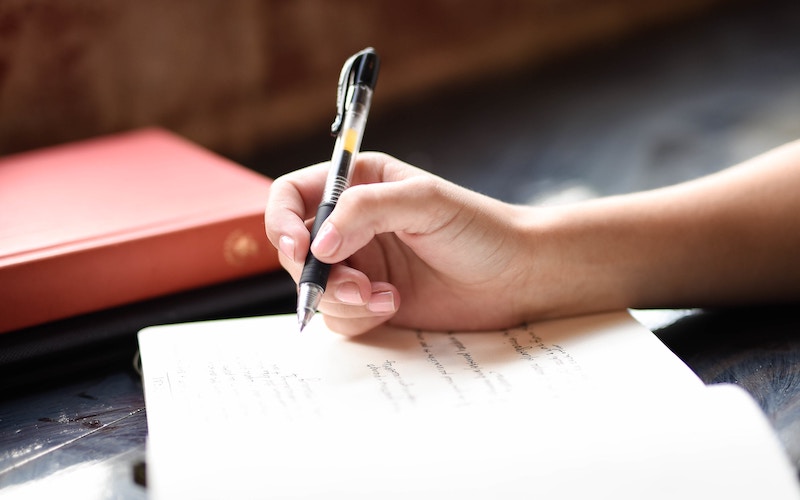Starting Your Daily Journal. Part 2: Method
Episode #2 of the course A daily journal practice to become a better person every day by John Robin
“Not being able to govern events, I govern myself.” —Michel de Montaigne, French philosopher, inventor of the essay
Welcome back to our course on daily journaling!
Now that you’ve learned how to set your journal up, I trust that you have a notebook all ready to go. As promised, today, we’ll talk about each part of the page and the method you’ll follow as you start.
Your First Day: Start-of-Day Journal
This step takes three to five minutes.
At the top of the first day’s page, fill in the date and day of the week.
Now, fill in each section in the order given in yesterday’s template:
Dreams. If you have any dreams fresh in your mind, write down the one that stands out most. Keep it brief. We’ll see more how to improve on this practice in Lesson 9, when we dig into dream analysis.
Today, I see myself doing. Try to visualize the main beats of your day. Mindfully write down each important beat in chronological order in a loose, run-on sentence. Separate each beat with semicolons or dashes.
We will talk much more about how to practice visualization in tomorrow’s lesson, so for now, focus on the following:
• Be specific.
• Focus on actions in your control.
• Skip lots—only capture the most important actions of the day.
End-of-Day Journal
As close as possible before bedtime, complete the rest of the sections. This takes seven to ten minutes.
Today, I am grateful for. Think through the day, and fill out the top three things that happened for which you are grateful.
This is not simple gratitude journaling—i.e., don’t say that you’re grateful for your kids or your house. Think specifically about something from the day that happened that you’re grateful for. A few examples:
• talking to my neighbor while in the garden, finding out more about his life
• finishing Chapter 23 of my book-in-progress
• going for my run after dinner despite wanting to sleep
We’ll talk more about gratitude in the lesson devoted to it.
Struggles. Treat this similarly to gratitude, except now, you’re at the opposite end of the spectrum. We all have struggles every day. Pick the top three that stand out most to you.
Try to be specific with these, just like with gratitude. Don’t worry, struggles will also have their own lesson in the course!
The main takeaway for now:
• Always do gratitude before this section.
• Always try to find exactly three things you are grateful for and three things you struggled with.
We will explore just why these two pointers are crucial in the lessons devoted to gratitude and struggles.
Intentions. These will also have their own lesson later, and they are similar to gratitude and struggles. Do gratitude first, then struggles, and finally, with both the highs and lows in perspective, think through the top three intentions you have for tomorrow.
__ years ago today, I was. Start with one year ago today. Take today’s date, and meditate briefly on what you were doing in your life exactly one year ago. This doesn’t have to be perfect. For example, if you moved to your new house last year in October and it’s October now, you can mention “adjusting to my new house.”
We will also have an entire lesson on this!
Your Second Day
On your next day of journaling, you will do exactly what you did the first day, with a few new steps:
1. Review yesterday’s intentions as part of your start-of-day journaling.
After filling in the date and your dream with your intentions in mind, visualize your day and see how and when you can fit those intentions in.
2. Mark yourself on your intentions and visualization as part of your end-of-day journaling.
When Day 2 is over, you can mark yourself on two things:
• how you did on the three intentions you laid out yesterday
○ If you accomplished it, put a “✔” next to it.
○ If you didn’t, put an “x”.
○ If you did something similar, put a “~”.
• how you did with your morning visualization
○ Use “✔”, “x”, or “~” over each main beat.
We’ll see more examples of how this marking system works in upcoming lessons.
3. Increase to “Two years ago today, I was” at the end.
Your Third Day and On
Repeat what you did for Day 2. Review your intentions from the previous day, then at the end of the day, mark yourself on how you followed through, using “✔”, “x”, or “~”.
Increase your “__ years ago today, I was” by one each day, i.e., “Three years ago today, I was,” “Four years ago today, I was,” etc.
This might seem daunting now, but I promise, in Lesson 8, you will learn tips to tackle it like a pro!
Homework
Get started on this method so you can follow along as the course ensues.
As promised, tomorrow, we’re going to start covering each aspect of the journal in detail. Get ready to dive into the art of visualization!
Recommended book
The 7 Habits of Highly Effective People by Stephen R. Covey
Share with friends

